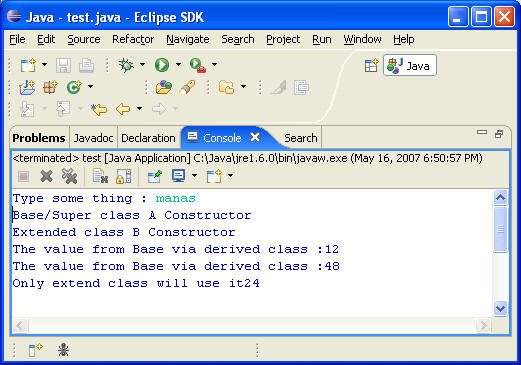- privileges are regulated by the parent or base or super class, these names are synonymous.
class A
{
public int share_all = 12;
private int share_within = 24;
protected int share_protedted = 48;
public A()
{
System.out.println("Base/Super class A ");
}
public void method_share()
{
}
protected void method_protected()
{
}
private void method_private()
{
int n1 = 20;
}
}
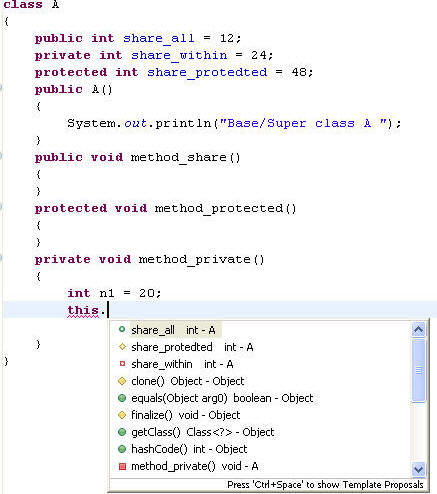
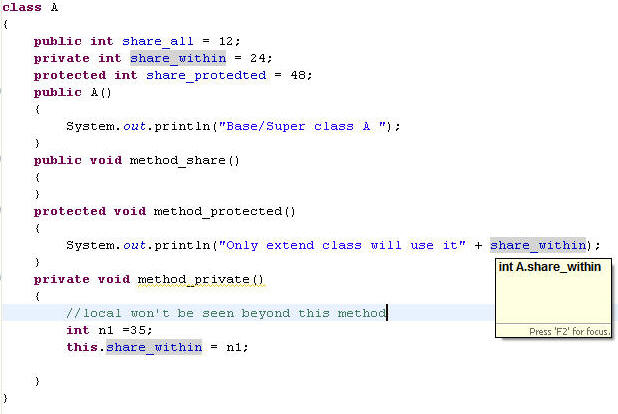
class B extends A
{
public B()
{
System.out.println("Extended class B Constructor ");
}
}
class A
{
public int share_all = 12;
private int share_within = 24;
protected int share_protedted = 48;
public A()
{
System.out.println("Base/Super class A ");
}
public void method_share()
{
}
protected void method_protected()
{
System.out.println("Only extend class will use it" + share_within);
}
private void method_private()
{
//local won't be seen beyond this method
int n1 =35;
this.share_within = n1;
}
}
class B extends A
{
public B()
{
System.out.println("Extended class B Constructor ");
}
}
public class test
{
String str = "Helloworld";
public static void main(String[] args) throws IOException
{
InputStreamReader isr = new InputStreamReader(System.in);
BufferedReader br = new BufferedReader(isr);
// needs throws IOException
System.out.print("Type some thing : ");
String str =br.readLine();
B b ;
}
}
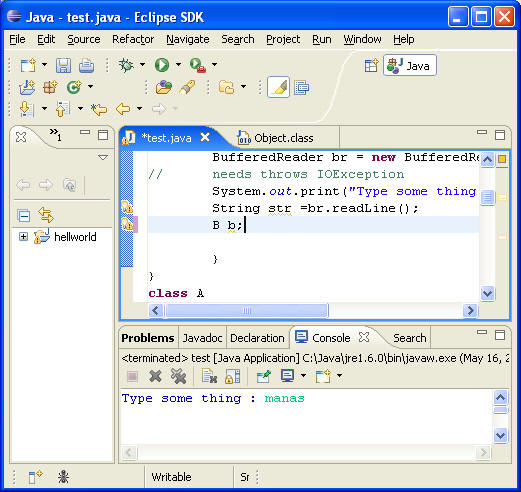
- B b = new B():
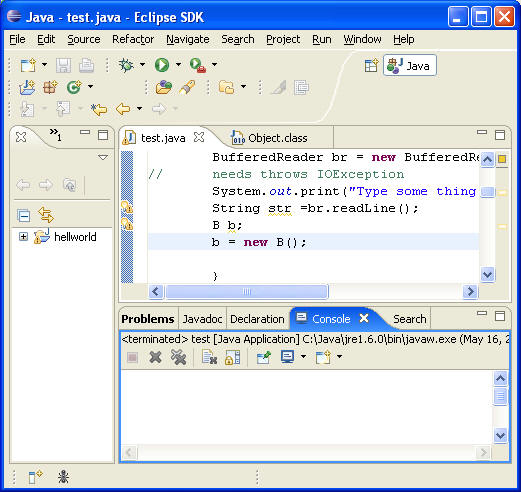
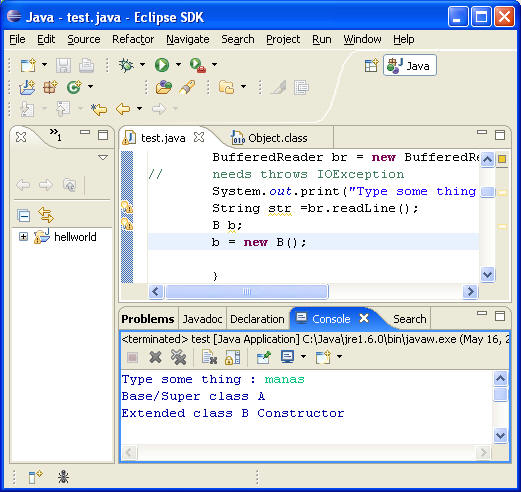
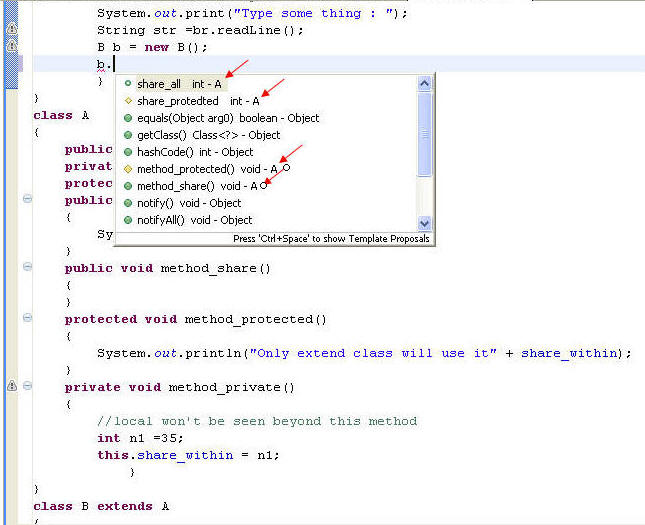
import java.io.*;
import java.io.IOException;
//javac clas_name.java
public class test
{
String str = "Helloworld";
public static void main(String[] args) throws IOException
{
InputStreamReader isr = new InputStreamReader(System.in);
BufferedReader br = new BufferedReader(isr);
// needs throws IOException
System.out.print("Type some thing : ");
String str =br.readLine();
B b = new B();
System.out.println("The value from Base via derived class :"+ b.share_all);
System.out.println("The value from Base via derived class :"+ b.share_protected);
b.method_protected();
b.method_share();
}
}
class A
{
public int share_all = 12 ;
private int share_within = 24;
protected int share_protected = 48;
public A()
{
System.out.println("Base/Super class A Constructor");
}
public void method_share()
{
}
protected void method_protected()
{
System.out.println("Only extend class will use it" + share_within);
}
private void method_private()
{
//local won't be seen beyond this method
int n1 =35;
this.share_within = n1;
}
}
class B extends A
{
public B()
{
System.out.println("Extended class B Constructor ");
}
}
